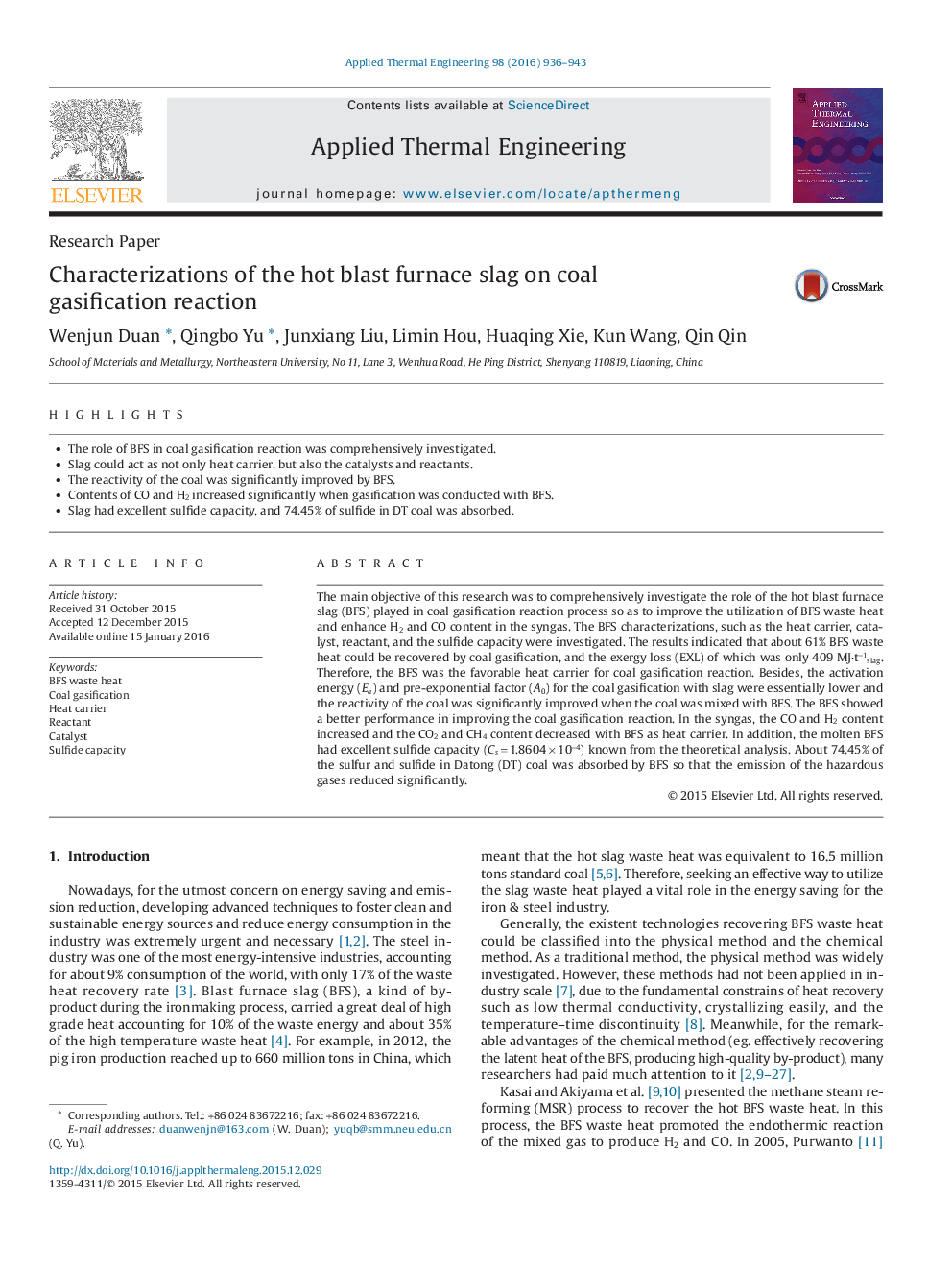| Article ID | Journal | Published Year | Pages | File Type |
|---|---|---|---|---|
| 7048686 | Applied Thermal Engineering | 2016 | 8 Pages |
Abstract
The main objective of this research was to comprehensively investigate the role of the hot blast furnace slag (BFS) played in coal gasification reaction process so as to improve the utilization of BFS waste heat and enhance H2 and CO content in the syngas. The BFS characterizations, such as the heat carrier, catalyst, reactant, and the sulfide capacity were investigated. The results indicated that about 61% BFS waste heat could be recovered by coal gasification, and the exergy loss (EXL) of which was only 409 MJâ
tâ1slag. Therefore, the BFS was the favorable heat carrier for coal gasification reaction. Besides, the activation energy (Ea) and pre-exponential factor (A0) for the coal gasification with slag were essentially lower and the reactivity of the coal was significantly improved when the coal was mixed with BFS. The BFS showed a better performance in improving the coal gasification reaction. In the syngas, the CO and H2 content increased and the CO2 and CH4 content decreased with BFS as heat carrier. In addition, the molten BFS had excellent sulfide capacity (Csâ=â1.8604âÃâ10â4) known from the theoretical analysis. About 74.45% of the sulfur and sulfide in Datong (DT) coal was absorbed by BFS so that the emission of the hazardous gases reduced significantly.
Related Topics
Physical Sciences and Engineering
Chemical Engineering
Fluid Flow and Transfer Processes
Authors
Wenjun Duan, Qingbo Yu, Junxiang Liu, Limin Hou, Huaqing Xie, Kun Wang, Qin Qin,
